Result
This is a challenging problem to generalize without knowing exactly what kind of paper/lines and ink combination to expect, and what exactly the output will be used for. I'd thought I'd attempt it and maybe learn something.
I see two ways to approach this problem:
The clever way: identify the grid, its color, orientation, size to find the regions of the image occupied by it, in order to ignore it. There are major caveats here that would need to be addressed. e.g. the page may not be photographed flat and squared (warp, distortion, rotation have to accounted for). There will also be lines that we don't want removed.
The simple way: Apply general image manipulations, knowing little about the problem other than the assumptions that the pen is always darker than the grid, and the output is to be binary (black pen / white page).
I like the second one better because it is easier to implement and generalizes better.
We first notice that the "white" of the page is actually a non-uniform shade of grey (if we convert to grayscale). The CV adaptive thresholding deals with this nicely. It almost gets us there.
The code below treats the image in 50x50 pixel blocks to address the non-uniformity of lighting. In each block, we subtract the median before applying a threshold. A simple solution, but maybe what you need. I haven't tested it on many images and the threshold and pre- and post-processing may need tweaking. It will not work if input images vary significantly, or if the grid is too dark relative to the ink.
import cv2
import numpy
import sys
BLOCK_SIZE = 50
THRESHOLD = 25
def preprocess(image):
image = cv2.medianBlur(image, 3)
image = cv2.GaussianBlur(image, (3, 3), 0)
return 255 - image
def postprocess(image):
image = cv2.medianBlur(image, 5)
# image = cv2.medianBlur(image, 5)
# kernel = numpy.ones((3,3), numpy.uint8)
# image = cv2.morphologyEx(image, cv2.MORPH_OPEN, kernel)
return image
def get_block_index(image_shape, yx, block_size):
y = numpy.arange(max(0, yx[0]-block_size), min(image_shape[0], yx[0]+block_size))
x = numpy.arange(max(0, yx[1]-block_size), min(image_shape[1], yx[1]+block_size))
return tuple(numpy.meshgrid(y, x))
def adaptive_median_threshold(img_in):
med = numpy.median(img_in)
img_out = numpy.zeros_like(img_in)
img_out[img_in - med < THRESHOLD] = 255
return img_out
def block_image_process(image, block_size):
out_image = numpy.zeros_like(image)
for row in range(0, image.shape[0], block_size):
for col in range(0, image.shape[1], block_size):
idx = (row, col)
block_idx = get_block_index(image.shape, idx, block_size)
out_image[block_idx] = adaptive_median_threshold(image[block_idx])
return out_image
def process_image_file(filename):
image_in = cv2.cvtColor(cv2.imread(filename), cv2.COLOR_BGR2GRAY)
image_in = preprocess(image_in)
image_out = block_image_process(image_in, BLOCK_SIZE)
image_out = postprocess(image_out)
cv2.imwrite('bin_' + filename, image_out)
if __name__ == "__main__":
process_image_file(sys.argv[1])


